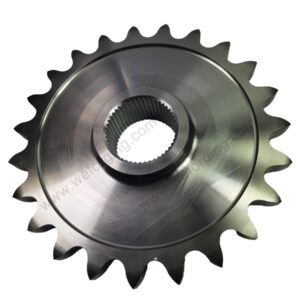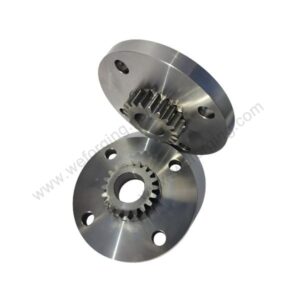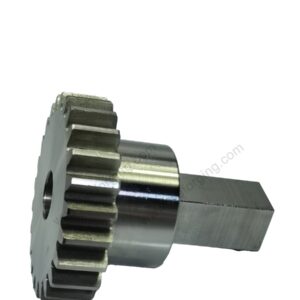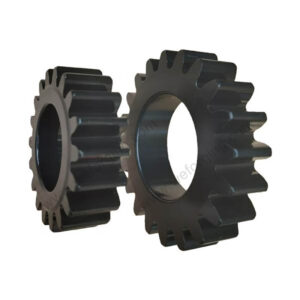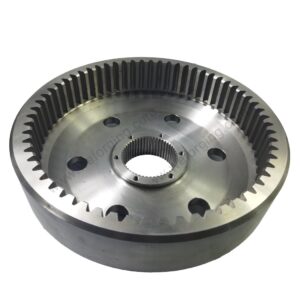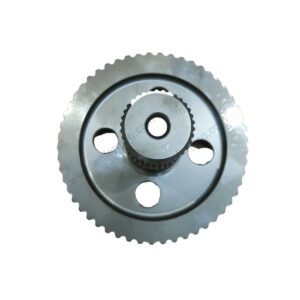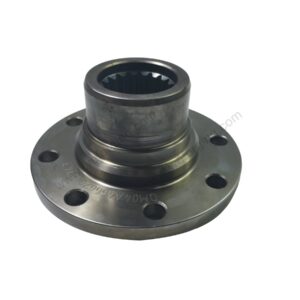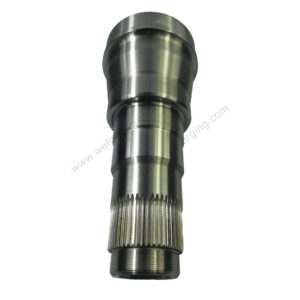-
Gears and Shafts
Forged Sprocket Wheel | CNC Machined Chain Drive Gear | Alloy Steel
-
Gears and Shafts
Precision Gear Shafts Manufacturing | ISO-Certified OEM Supplier
-
Gears and Shafts
Custom Pinion Gear by Weforging | Precision Forged And CNC Machined
-
Gears and Shafts
Internal Ring Gear | CNC Ground | Planetary Drive Ready
-
Gears and Shafts
Input Shaft Gear | 8620 Alloy Steel | AGMA 10 Rated
-
Gears and Shafts
Flange Gear | CNC-Machined Forged Steel | High Torque
-
Gears and Shafts
Spline Shaft Forgings | Precision Transmission Parts
Gears And Shafts
Weforging is a trusted global manufacturer of gear shafts, shaft gears, and complete gear assemblies for industrial applications. We supply OEM-grade machinery gears and custom gear shafts across Europe and North America, delivering forged and CNC-machined components engineered for precision, strength, and durability. With expertise in transmission system solutions, Weforging helps OEMs achieve reliable performance, cost efficiency, and long service life in critical machinery.
Forged and Machined Gear Shaft Solutions
Our vertically integrated workflow gives full control from gear shaft forging to final CNC machining and milling. Whether you require large-scale gear shaft factory production or prototype pinion gear shaft development, Weforging provides flexible solutions tailored to your needs.
We specialize in:
Custom gear shaft manufacturing with forging and machining integration
Precision turning for input shaft forging and output shaft forging
Fine-tolerance machining for shaft gears, splines, and keyways
With advanced CNC turning and milling services, we deliver hardened, high-load gear shafts and assemblies engineered for performance in automotive, energy, and heavy machinery applications.
Gear Ring and Internal Gear Manufacturing
Weforging manufactures precision gear ring, ring gear, and internal ring gear products. These are essential for planetary transmissions, gearboxes, and high-speed reduction systems.
Key capabilities:
- Forged Gear Blank Forgings for performance and consistency
- Gear shaping and cnc machining milling for final dimension control
- Surface hardening and tooth profile optimization
We produce custom ring gear and ring gear pinion combinations for multi-stage planetary systems. All gear forgings are inspected with 3D CMM and undergo ultrasonic and hardness testing.
CNC Gear Machining & Shaft Processing
As a full-service gear shaft manufacturer reputable, we offer:
- 3- to 5-axis milling machine millingand cnc turning and milling services
- CAM-supported operations for complex shaft profiles
- Gear hobbing, grinding, and spline cutting
- Optional finishing: black oxide, phosphate, or plating
Our aluminum cnc turning parts and steel shafts are used in agriculture, robotics, wind energy, and transportation.
Forging Strength, Machining Precision
Unlike standalone shops, we manage both Gear Shaft Forging and final CNC finishing in-house. Benefits include:
- Optimized strength via directional grain flow
- Improved concentricity and runout control
- Lower material waste than bar stock machining
- Full traceability and export-ready documentation
From Internal gear forging to hardened Shaft Gear Forging, Weforging delivers performance you can measure.
Our custom gear, shaft and gear, and planetary transmission gear systems are commonly used in:
- Industrial machinery and automation
- Electric motor reducers
- Mining and construction equipment
- Agricultural power transmission
We support both low-volume prototyping and large-scale production.
Contact Us
Request a quote or send your technical drawings to:
📧 wf-kevin@outlook.com

